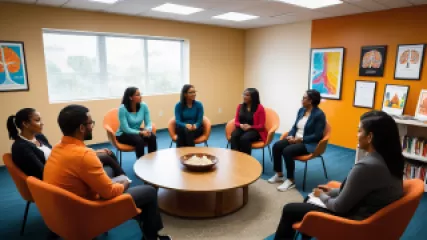How Cultural Competence Transformed My Mental Health Coaching
Diversity in mental health coaching is more than just a buzzword; it’s a necessity. As someone who has dedicated their career to mental health coaching, I can attest to the transformative power of cultural competence. My journey in becoming a culturally competent therapist has been both challenging and rewarding. This personal experience not only broadened my understanding but also enhanced the quality of support I provide to my clients.
The Early Days: A Narrow Perspective
When I first started as a mental health coach, my approach was quite linear. I adhered strictly to the methods I learned during my training, which were largely based on Western psychological practices. These methods were effective to an extent, but I noticed that they didn't resonate with all my clients. It was particularly evident when working with individuals from diverse cultural backgrounds.
I remember a session with a client named Mei. She came from a traditional Chinese background, and her issues were deeply rooted in cultural norms and family expectations. Despite my best efforts, my standard techniques seemed insufficient. Mei's responses were often guarded, and I felt a growing sense of frustration. It became clear that my approach needed to evolve.
The Awakening: Realizing the Gaps
The turning point came during a workshop on cross-cultural counseling. The facilitator, a renowned expert in the field, spoke passionately about the importance of understanding and respecting cultural nuances. For the first time, I realized how limited my perspective had been. I learned about the concept of cultural humility, which involves acknowledging one’s own limitations in understanding another person’s culture.
"Cultural humility is about being open to learning from others and recognizing that no single approach fits all."
- Workshop Facilitator
This workshop was an eye-opener. It made me aware of the unconscious biases that could affect my coaching. I began to understand that culturally sensitive mental health support was essential for truly effective counseling.
Embracing Cultural Competence
Determined to improve, I immersed myself in learning about culturally competent therapists and the strategies they employed. I read extensively, attended more workshops, and even sought mentorship from experienced professionals in the field. One book, in particular, stood out: "The Spirit Catches You and You Fall Down" by Anne Fadiman. It eloquently illustrated the clash between Western medicine and Hmong cultural beliefs, underscoring the need for cross-cultural communication in online coaching and face-to-face interactions.
I began to incorporate what I learned into my practice. Here are some key steps I took:
- Active Listening: I made it a point to listen more and talk less, allowing my clients to share their stories without interruption.
- Asking Open-Ended Questions: Instead of making assumptions, I asked questions that encouraged clients to express their cultural values and beliefs.
- Ongoing Education: I committed to continuous learning about different cultures and their unique mental health needs.
- Building Trust: I focused on building a rapport with clients, showing genuine interest in their backgrounds and experiences.
A New Approach: Tailoring Techniques to Fit
With my newfound knowledge, I revisited my sessions with Mei. This time, I approached our conversations differently. I asked about her family traditions and how they influenced her current situation. Mei opened up about the pressure she felt to conform to her family's expectations, something she hadn't shared before.
Understanding this cultural context allowed me to tailor my techniques. We worked on strategies that respected her cultural values while addressing her mental health concerns. Mei’s progress was remarkable, and our sessions became more productive. This experience reinforced the importance of diversity and inclusion in mental health services.
The Ripple Effect: Impact on Other Clients
The positive outcomes I saw with Mei motivated me to apply the same principles to other clients. One such client was Ahmed, a young man from a Middle Eastern background. He struggled with anxiety, exacerbated by the cultural stigma surrounding mental health in his community.
By acknowledging Ahmed’s cultural background and the societal pressures he faced, I was able to create a safe space for him to discuss his feelings. We explored coping mechanisms that aligned with his cultural values, such as meditation and family support. Ahmed’s anxiety gradually decreased, and he expressed gratitude for the culturally sensitive approach.
Another client, Maria, hailed from a Hispanic background. Her depression was linked to the loss of her grandmother, a central figure in her family. In our sessions, we incorporated discussions about her grandmother’s legacy and cultural rituals associated with mourning. This helped Maria process her grief in a meaningful way.
Challenges and Lessons Learned
While the journey towards cultural competence has been fulfilling, it hasn’t been without challenges. One of the biggest hurdles was confronting my own biases. It required a great deal of self-reflection and a willingness to be vulnerable. There were moments of discomfort, but they were necessary for growth.
Another challenge was the constant need for adaptation. Each client brought a unique set of cultural dynamics, requiring me to stay flexible and open-minded. I learned that there is no one-size-fits-all solution in mental health coaching. It’s an ever-evolving process that demands continuous learning and empathy.
Despite these challenges, the rewards have been immense. Seeing my clients thrive and knowing that my culturally sensitive approach played a role in their healing is incredibly gratifying. It has also deepened my appreciation for the richness of diverse cultures.
Building a Practice Centered on Cultural Competence
Inspired by the positive impact of cultural competence, I decided to build my practice around these principles. I incorporated diversity and inclusion in mental health services as core values. My goal was to create an environment where clients from all backgrounds felt understood and respected.
To achieve this, I implemented several strategies:
- Diverse Team: I actively recruited mental health professionals from various cultural backgrounds to bring different perspectives to the practice.
- Cultural Training: Regular training sessions were conducted to ensure that all team members were equipped with the knowledge and skills to provide culturally competent care.
- Client Feedback: I introduced a feedback system where clients could share their experiences and suggest improvements related to cultural sensitivity.
- Community Engagement: We engaged with local communities to better understand their specific mental health needs and offer tailored support.
These initiatives helped create a welcoming and inclusive atmosphere. Clients appreciated the effort put into understanding their unique cultural contexts, leading to stronger therapeutic relationships and better outcomes.
The Role of Technology in Cross-Cultural Communication
In today’s digital age, technology plays a significant role in mental health coaching. It offers opportunities for cross-cultural communication in online coaching. However, it also presents challenges in ensuring that cultural nuances are not lost in virtual interactions.
To address this, I leveraged technology to enhance cultural competence in my online practice:
- Video Sessions: I preferred video calls over text-based communication to capture non-verbal cues and establish a more personal connection.
- Translation Services: For clients who were more comfortable in their native language, I used professional translation services to facilitate accurate communication.
- Digital Resources: I provided culturally relevant digital resources, such as articles and videos, to support clients’ mental health journeys.
- Virtual Workshops: I organized online workshops on cultural competence to educate both clients and fellow practitioners.
These efforts ensured that my online coaching remained effective and respectful of cultural differences. Clients felt valued and understood, regardless of geographical boundaries.
The Broader Impact: Advocating for Systemic Change
My journey towards cultural competence didn’t stop at individual practice. I realized the importance of advocating for systemic change within the mental health industry. There is a pressing need for policies and practices that promote diversity in mental health coaching on a broader scale.
Here are some ways I’ve contributed to this cause:
- Policy Advocacy: I collaborated with mental health organizations to advocate for policies that mandate cultural competence training for all practitioners.
- Public Speaking: I delivered talks and presentations at conferences and community events to raise awareness about the importance of culturally sensitive mental health support.
- Research: I participated in research projects focused on the impact of cultural competence on mental health outcomes, contributing to the academic discourse on the subject.
- Mentorship: I mentored upcoming mental health coaches, emphasizing the importance of cultural competence in their training and practice.
By taking these steps, I aimed to create a ripple effect, encouraging others in the industry to prioritize cultural competence. It’s a collective effort that requires commitment and collaboration.
Reflections and Future Aspirations
Looking back on my journey, I am grateful for the experiences that led me to embrace cultural competence. It has made me a better mental health coach and a more empathetic human being. The relationships I’ve built and the positive impact on my clients’ lives are testaments to the power of culturally sensitive mental health support.
As I continue on this path, I have several aspirations for the future:
- Expand Reach: I aim to extend my practice to underserved communities, providing culturally competent mental health support to those who need it most.
- Innovative Approaches: I plan to explore innovative approaches, such as combining traditional healing practices with modern therapy techniques, to offer holistic support.
- Global Collaboration: I seek to collaborate with mental health professionals worldwide, sharing knowledge and best practices to create a global network of culturally competent therapists.
- Continued Learning: I am committed to lifelong learning, staying updated on the latest research and developments in cross-cultural counseling.
The journey towards cultural competence is ongoing. It’s a dynamic process that evolves with each new experience and interaction. By remaining open and dedicated, I am confident that I can continue to make a positive difference in the lives of my clients.
Final Thoughts: The Essence of Cultural Competence
Cultural competence is not just a skill; it’s a mindset. It requires humility, empathy, and a genuine desire to understand and respect others. In the realm of mental health coaching, it is indispensable. It bridges the gap between diverse cultural backgrounds and effective mental health support, fostering a more inclusive and compassionate world.
My journey has taught me that diversity in mental health coaching enriches the therapeutic process. It allows us to see beyond our own perspectives and connect with clients on a deeper level. By embracing cultural competence, we can provide the culturally sensitive mental health support that every individual deserves.
I encourage all mental health professionals to embark on their own journey towards cultural competence. It’s a path filled with learning, growth, and profound rewards. Together, we can create a mental health landscape that celebrates diversity and promotes well-being for all.
Thank you for joining me on this journey. May it inspire you to embrace cultural competence in your own practice and make a positive impact on the lives you touch.






